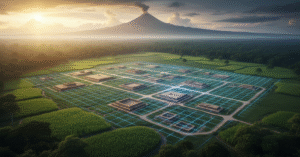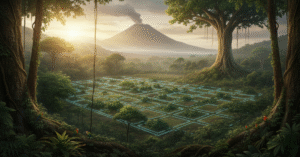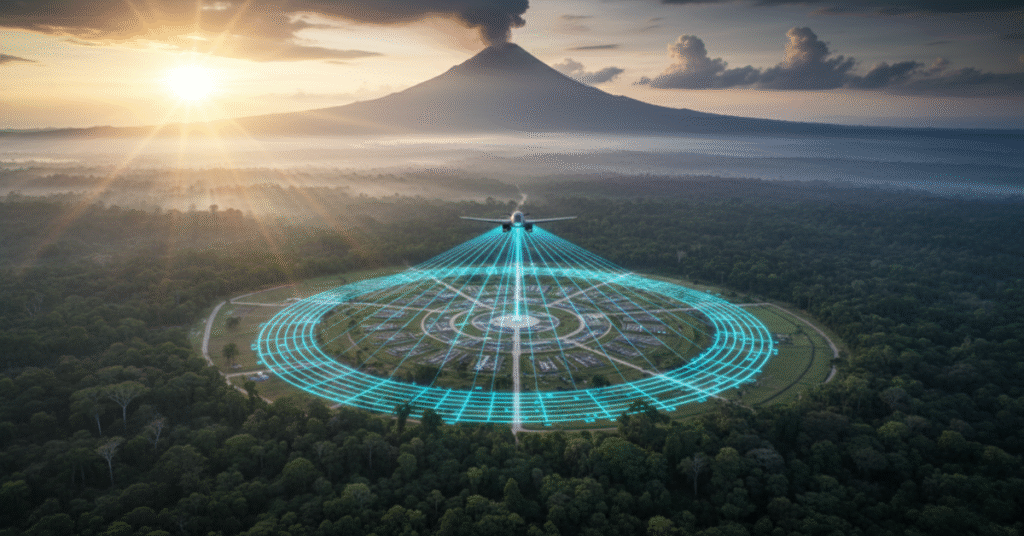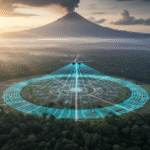When I first heard the news, my immediate thought was, “We really knew nothing.” For decades, textbooks and documentaries have painted the Amazon rainforest as an endless wilderness, only suitable for small, scattered tribes. But the latest archaeological breakthrough, centering on the ancient city of Upano people in Ecuador, has shattered this misconception and forced us to rewrite the history of one of Earth’s most vital regions. This isn’t just the discovery of a few ruins; it’s the unearthing of a massive, meticulously planned urban landscape that rivals some of the greatest civilizations of the ancient world.
The Great Lidar Revelation in Upano Valley
The most striking aspect of this discovery is not just what was found, but how. The dense canopy of the Amazon has always been archaeology’s greatest adversary. Traditional ground excavations are slow, difficult, and only reveal a small fraction of the truth. That all changed with the use of LiDAR (Light Detection and Ranging) technology.
My experience with technology tells me that when you combine advanced tools with a challenging problem, the results are often revolutionary. LiDAR, which uses laser pulses from an aircraft to create a precise 3D map of the ground beneath the foliage, essentially allowed researchers to “peel back” the forest. What they saw in the Upano Valley, located in the eastern foothills of the Ecuadorian Andes, was breathtaking.
The laser scans revealed a complex of at least 15 large settlements and many smaller ones, spreading over an area of more than 300 square kilometers (116 square miles). This network was not a haphazard collection of huts; it was a highly organized society. The core of the settlements consisted of thousands of rectangular earthen platforms (mounds)—some as large as 460 feet long—arranged around grand central plazas, all connected by an incredible system of straight, wide roads and pathways.
The Master Planners of the Pre-Columbian Amazon

The inhabitants, known today as the ancient city of Upano people, were active from around 500 BCE to 600 CE, a time period that makes their society older than any other major complex civilization previously known in the Amazon. This timeline alone is a major challenge to history.
Sophisticated Infrastructure and Agriculture
What set the Upano civilization apart was their mastery of their environment:
- Engineering Marvels: The massive, perfectly straight roads—some extending for kilometers—suggest a central authority and coordinated labor on a huge scale, similar to the planning seen in the Mayan world.
- Fertile Lands: The settlements were surrounded by extensive agricultural land. They built terraced fields into the hillsides and dug intricate drainage canals to manage the abundant rainfall. Evidence shows they cultivated essential crops like maize (corn), manioc, and sweet potatoes. The nearby Sangay volcano likely provided a constant supply of rich, fertile soil, turning the valley into a large, sustainable garden.
This level of permanent, large-scale urbanism, sustained for over a thousand years, completely disproves the old colonial idea that the Amazon could not support large human populations due to poor soil and harsh climate. The ancient city of Upano people didn’t just survive; they thrived by becoming master land engineers.
Latest Insights: Why the City Was Abandoned

The most compelling research (updated as recently as September 2025) focuses on the civilization’s end. Initial theories suggested the city might have been destroyed abruptly by a massive volcanic eruption.
However, detailed sediment analysis from nearby Lake Cormorán offers a more nuanced picture. This data, which tracks agricultural practices, suggests that the decline of the ancient city of Upano people was more gradual, occurring between 200 CE and 550 CE. Instead of a sudden catastrophe, a combination of factors, perhaps including prolonged changes in climate, shifting volcanic activity, or even internal social stresses, led to the slow abandonment of the main urban centers, allowing the forest to reclaim its territory.
The research also found that even after the civilization’s collapse, the ecological footprint remains. The forests growing there today are still influenced by the trees the Upano people selectively cultivated, proving that this ancient civilization did not just exist in the Amazon, but fundamentally shaped it.
My Conclusion on the Upano Legacy
As someone who is dedicated to sharing verified facts, I believe the discovery of the ancient city of Upano people is a monumental achievement. It reminds us that our understanding of the world is never complete and that beneath every myth of a “lost city” lies a complex, brilliant, and very real history waiting to be uncovered. This revelation is a testament to the ingenuity of Indigenous Amazonian societies and a powerful reminder that “wilderness” often hides the remnants of magnificent human achievement. Our duty now is to learn from their success and respect their enduring legacy.






